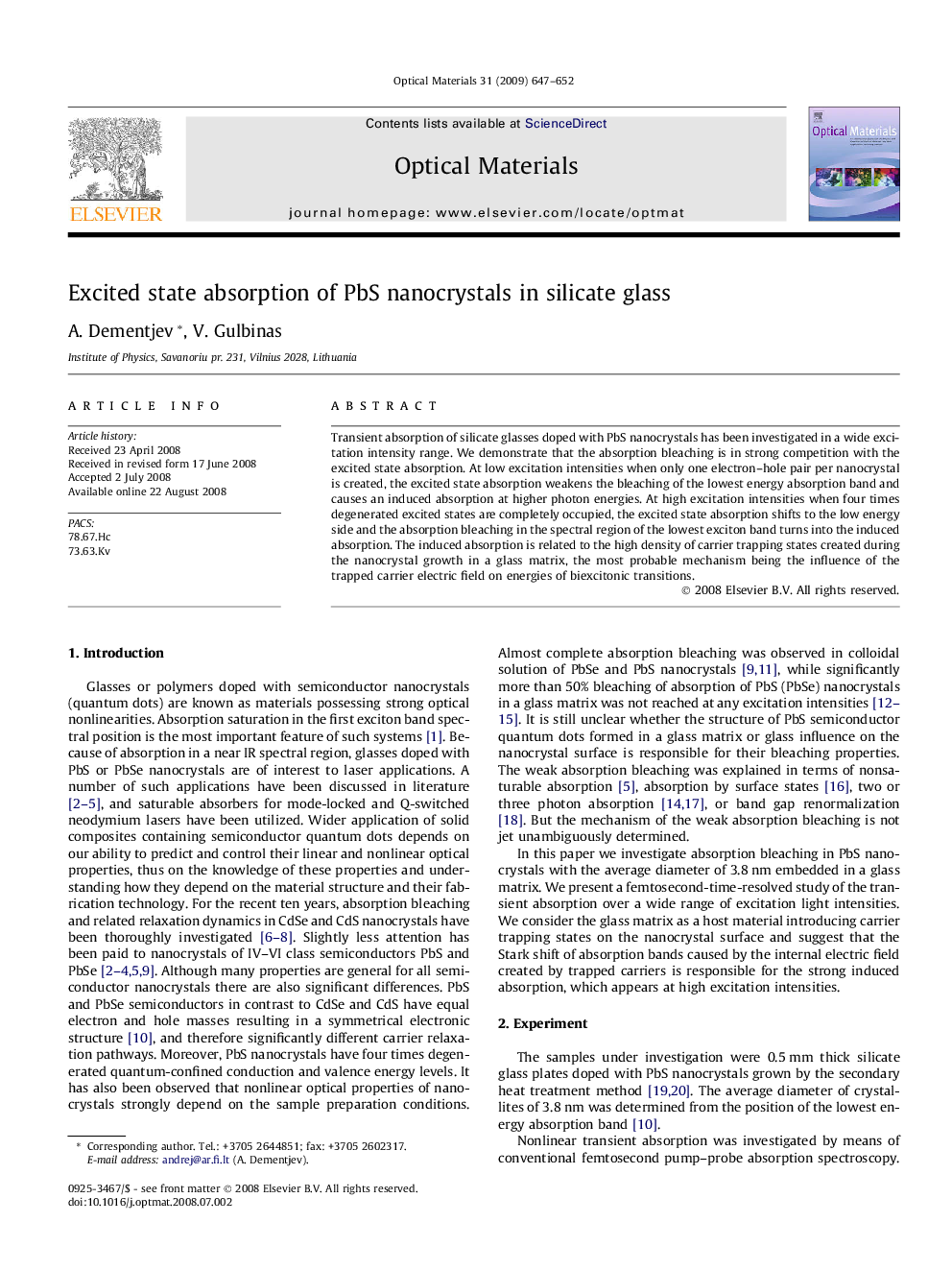| Article ID | Journal | Published Year | Pages | File Type |
|---|---|---|---|---|
| 1496216 | Optical Materials | 2009 | 6 Pages |
Abstract
Transient absorption of silicate glasses doped with PbS nanocrystals has been investigated in a wide excitation intensity range. We demonstrate that the absorption bleaching is in strong competition with the excited state absorption. At low excitation intensities when only one electron-hole pair per nanocrystal is created, the excited state absorption weakens the bleaching of the lowest energy absorption band and causes an induced absorption at higher photon energies. At high excitation intensities when four times degenerated excited states are completely occupied, the excited state absorption shifts to the low energy side and the absorption bleaching in the spectral region of the lowest exciton band turns into the induced absorption. The induced absorption is related to the high density of carrier trapping states created during the nanocrystal growth in a glass matrix, the most probable mechanism being the influence of the trapped carrier electric field on energies of biexcitonic transitions.
Related Topics
Physical Sciences and Engineering
Materials Science
Ceramics and Composites
Authors
A. Dementjev, V. Gulbinas,
